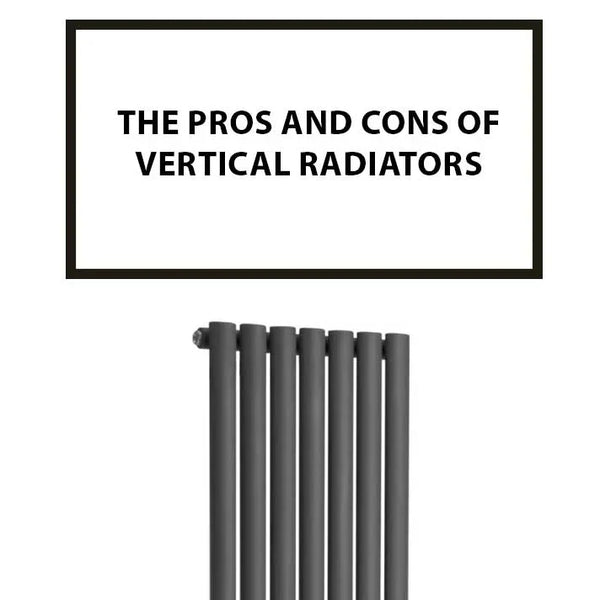Curtains Over Your Radiator? Why It’s Costing You Money This Winter
Hello, As another British winter approaches, we all start thinking about two things: how to stay warm and how to manage those ever-rising energy bills. You've got the heating on, you've sealed the draughts, but one of your rooms just won't get properly cosy. What if I told you the problem could be hiding in plain sight?
That's right, the very curtains you chose to make your room stylish could be the secret energy thief in your home. Let's break down why hanging long curtains over a radiator is one of the most common home efficiency mistakes and, most importantly, how to fix it.

The Core Problem: You're Heating the Window, Not the Room
To understand why this is such an issue, we need a quick science lesson on how radiators work. Their primary job is to heat a room through convection.
- The radiator draws in cool air from the floor.
- It heats this air using the hot water circulating inside it.
- This newly warmed air rises towards the ceiling.
- As it circulates, it pushes the cooler air down to be heated, creating a continuous, room-warming cycle.
Now, place a long, heavy curtain in front of that radiator. You've just created a barrier. Instead of flowing into your room, that lovely warm air gets trapped in the space between the curtain and the window. Since windows are typically the coldest part of a wall, the heat is rapidly lost to the outside.
Essentially, you are paying good money to heat up a small pocket of air that is doing its best to escape. Your room stays chilly, your thermostat tells your boiler to work even harder, and your heating bill goes up.

Is It a Fire Hazard?
For the most part, standard hot-water central heating radiators do not get hot enough to set fire to curtains. However, the constant direct heat can cause the fabric's colour to fade over time or lead to yellowing and brittleness.
Important Note: This does not apply to portable electric heaters or older storage heaters. These can reach much higher temperatures and placing any fabric near them is a significant fire risk. Always keep curtains and other soft furnishings well clear.
The Solution: Smart & Stylish Window Dressings
The good news is you don't have to choose between a warm home and a stylish one. Here are some of the best solutions for windows with radiators underneath.
- Sill-Length Curtains: The simplest and most effective fix. Curtains that stop at the windowsill allow the radiator to breathe and circulate heat freely into the room.
- Blinds (Roller, Roman, Venetian): Blinds are fantastic as they fit neatly inside the window recess, leaving the radiator completely unobstructed. They offer a clean, modern look and come in thermal varieties for extra insulation.
- The Layered Look: Get the best of both worlds. Install a functional blind for privacy and heat management, and then frame the window with decorative curtain panels on either side. This gives you the plush look of curtains without the energy waste.
- A Radiator Shelf: Installing a simple shelf just above your radiator can make a huge difference. It works by deflecting the rising hot air forward into the room, rather than letting it get trapped behind the curtains.
Which Option is Best for You? A Quick Comparison
| Window Dressing Solution | The Good (Pros) | The Bad (Cons) |
|---|---|---|
| Long Curtains (Over Radiator) | Can look luxurious and traditional. | Huge energy loss, higher bills, can cause cold spots in the room. |
| Sill-Length Curtains | Excellent heat efficiency, cost-effective. | May not suit all interior design styles; less of a "grand" look. |
| Blinds (Roller/Roman) | Modern look, great for efficiency, doesn't interfere with the radiator at all. | May not offer the same "softness" as curtains. |
| Layering Blinds & Curtains | The best of both worlds: efficient and stylish. | Can be more expensive than a single solution. |
Your Takeaway for a Warmer Winter
Making a small change to your window dressings is one of the easiest and most impactful ways to improve your home's energy efficiency. Before the cold really sets in, take a look at your radiators. By simply freeing them from behind your curtains, you'll create a cosier living space and notice a welcome difference in your winter heating bills.
Frequently Asked Questions
Why exactly are long curtains over radiators bad for energy efficiency?
Long curtains act as a barrier, trapping the hot air generated by the radiator. Instead of circulating into the room, this heat is funnelled up towards the window, the coldest part of the wall, and is lost to the outside. This forces your heating system to work harder to warm the room, wasting energy and increasing your bills.
Are curtains over radiators a serious fire risk?
For standard hot-water central heating systems, the risk of fire is very low as they don't get hot enough to ignite fabric. However, it can cause fabric damage like yellowing or brittleness over time. The risk is significantly higher with old or faulty electric heaters, which can overheat and must be kept clear of all soft furnishings.
How much money can I actually save by changing my curtains?
While the exact amount varies depending on your home's insulation, energy prices, and how often you use the heating, preventing significant heat loss can lead to noticeable savings. Some energy experts suggest that optimising your home for heat efficiency can save up to 10-20% on heating bills annually.
What are the best types of curtains to use with a radiator below the window?
The best option is sill-length curtains that finish just above the radiator. This allows heat to flow freely into the room. If you prefer a fuller look, consider layering a functional blind in the window recess with decorative, stationary curtain panels at the sides.
Do radiator shelves really work?
Yes, they can be very effective. A radiator shelf acts as a diverter, directing the rising hot air forward into the room, rather than letting it get trapped behind curtains or rise straight up to the ceiling. It's a simple and affordable way to improve heat circulation.
I have thermal curtains. Does it matter if they cover the radiator?
Yes, it still matters. While thermal curtains are excellent at preventing heat from escaping through the window glass, if they cover the radiator, their insulating properties will trap the heat behind the curtain. You are effectively insulating the window from the radiator's heat, but not allowing that heat into your room.
Are blinds more energy-efficient than curtains?
It depends on the type. A well-fitted thermal or cellular (honeycomb) blind can be more efficient than a standard unlined curtain because it traps a layer of air. When a radiator is involved, any type of blind that doesn't obstruct the radiator will be more efficient than a long curtain that does.
I love my long curtains. Is there a way to keep them and still save energy?
A good compromise is to use curtain tie-backs or holdbacks. During the day and especially when the heating is on, use them to pull the curtains well away from the radiator. At night, you can close them fully to benefit from their insulating properties against the cold glass, but remember to pull them back again when the heating kicks in.
How much space should there be between a curtain and a radiator?
Ideally, the curtains should end at least 3-4 cm (about 1.5 inches) above the radiator to allow for proper air circulation. For safety with any type of heater, ensuring they don't touch is the minimum requirement.
Should I change my curtain habits in the summer?
Yes. In the summer, your curtains play a different role. On hot, sunny days, closing your curtains (especially if they are light-coloured or thermal) can block out solar heat and keep your home cooler, reducing the need for fans or air conditioning.







